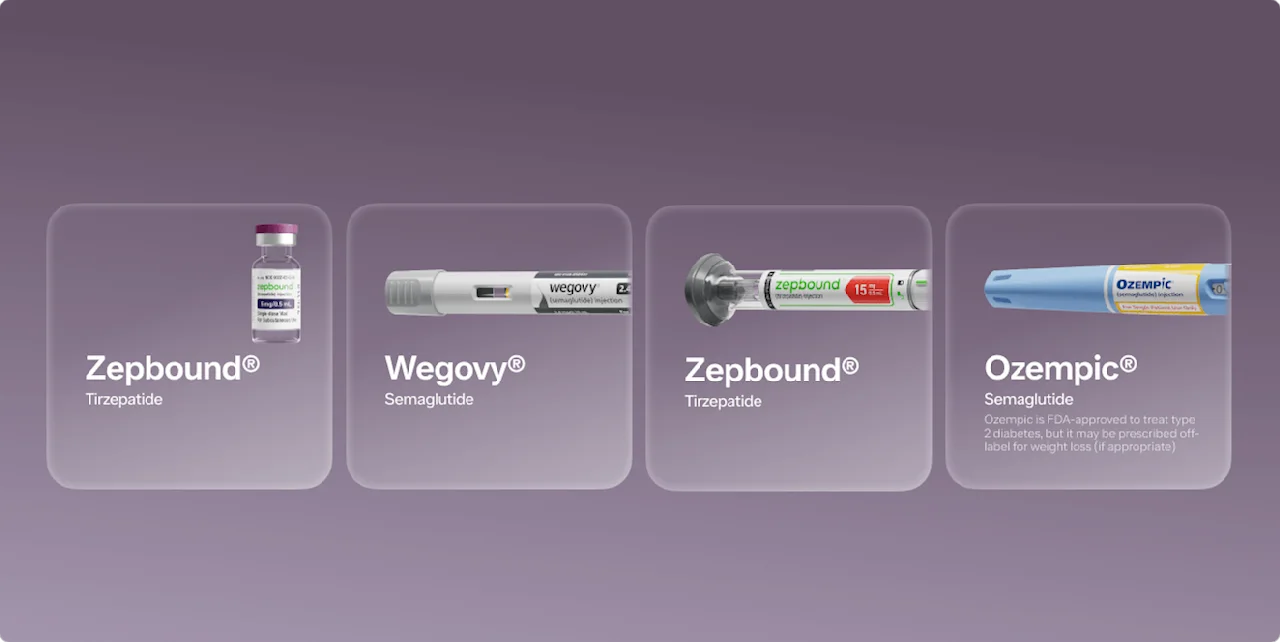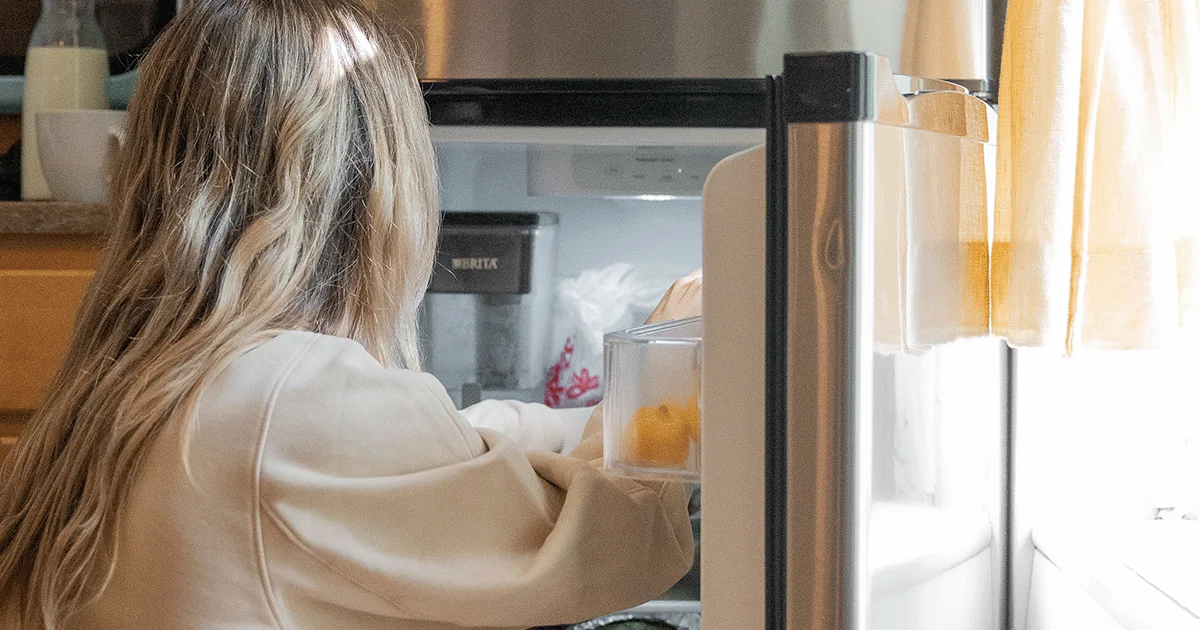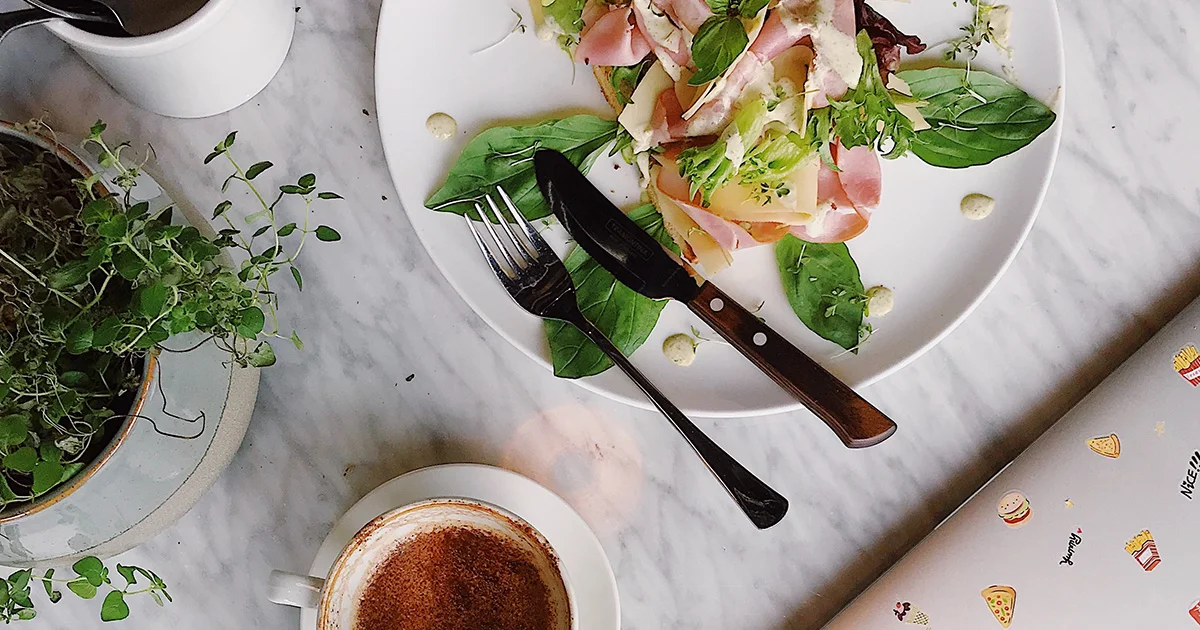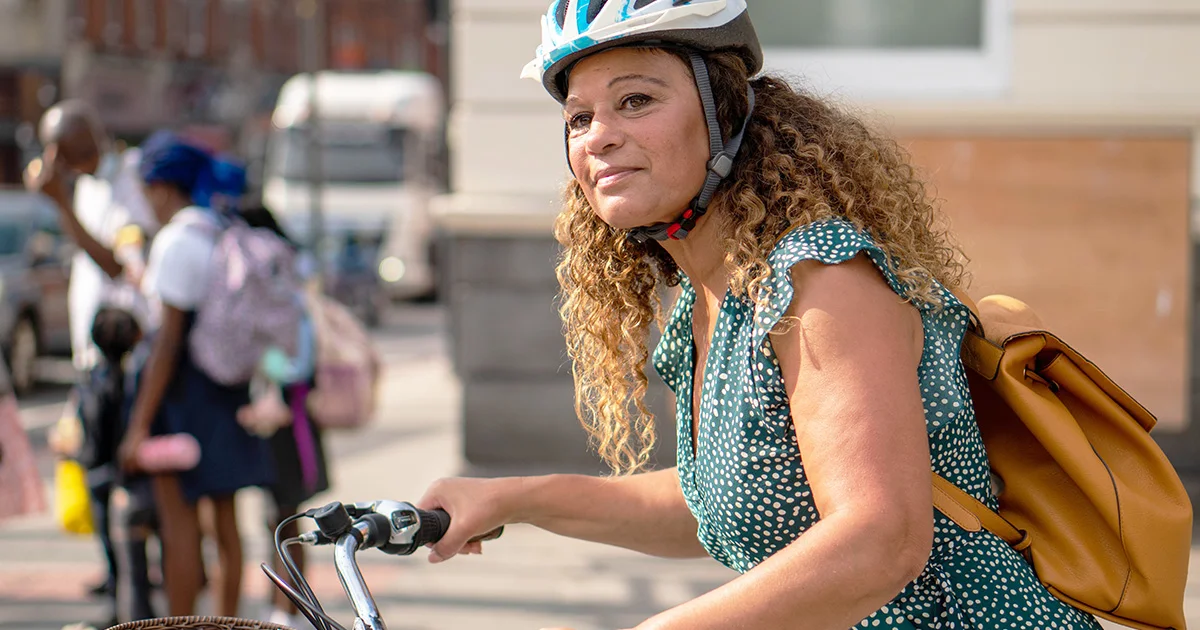Here's what we'll cover
If you’re taking Mounjaro to manage type 2 diabetes, you may have heard there are certain foods you should avoid. Here’s the thing: no specific foods are known to have drug interactions with Mounjaro. However, certain foods can cause side effects similar to Mounjaro or make it more challenging to control blood sugar levels, or lose weight.
Read on as we explain what you need to know about what you eat when taking Mounjaro.
What is Mounjaro?
Mounjaro (generic name: tirzepatide) is a prescription drug that treats type 2 diabetes. Mounjaro does not treat type 1 diabetes. Each dose of Mounjaro comes in a single-dose prescription pen, which you inject subcutaneously (under the skin) into your upper arm, abdomen, or thigh. The most common side effects of Mounjaro generally affect the stomach or intestines, and may include:
Abdominal pain
Constipation
Diarrhea
Indigestion or upset stomach
Nausea
Reduced appetite
Vomiting
Mounjaro is a dual GIP and GLP-1 receptor agonist manufactured by Eli Lilly. Mounjaro works by mimicking two hormones your body naturally produces. These two hormones are glucose-dependent insulinotropic polypeptide (GIP) and glucagon-like peptide-1 (GLP-1). They help manage your blood sugar levels by directing your pancreas to release insulin whenever blood glucose gets too high. GIP and GLP1 also help you feel full.
In people with type 2 diabetes, insulin is not released as it should, which leads to high blood sugar levels. Mounjaro remedies this by directing your pancreas to release more insulin when needed. It also slows down gastric emptying, or the process by which your stomach fully empties. As a result, people taking Mounjaro feel fuller for longer, leading to weight loss. Indeed, clinical trials have found that diabetes medications like Mounjaro can significantly reduce body weight in people with obesity, with or without type 2 diabetes.
However, while Mounjaro may be prescribed off-label for weight loss, it is currently only FDA-approved to improve glycemic control in people with type 2 diabetes, in combination with diet and exercise.
Mounjaro Important Safety Information: Read more about serious warnings and safety info.
Foods to avoid while taking Mounjaro
While no foods are “off-limits” when taking Mounjaro, some types of food can produce gastrointestinal symptoms similar to Mounjaro’s side effects or make glycemic control or weight loss more challenging. Avoiding or limiting these foods may lessen the side effects you experience with Mounjaro. Your healthcare provider can advise you on the best meal plan for you, based on your current medical conditions and history.
1. Fried and greasy foods
Regular consumption of fried foods, whether eaten at home or at a restaurant, increases the risk of weight gain and type 2 diabetes. Similar to Mounjaro, these foods can also cause gastrointestinal symptoms like bloating and gassiness.
Plus, the trans fats and saturated fats fried foods typically contain are associated with an increased risk of cardiovascular disease, like coronary artery disease. Consider replacing fried foods with healthier, unsaturated fats from plant sources like olive oil or nuts.
2. Sugary foods
Sugar can cause blood sugar levels to spike. Also, a diet with more sugary foods is associated with overeating and weight gain, which may make it harder to see results with Mounjaro.
Review the nutrition label when you purchase foods at the grocery store, keeping a close eye on their sugar content. Where possible, swap the sugar and starches for healthy carbs and lots of dietary fiber.
3. Sodas and carbonated beverages
Speaking of sugar, it’s smart to avoid sodas when taking Mounjaro. Sodas tend to contain a high amount of sugar. One analysis found that while both regular and diet soda increased the risk of type 2 diabetes, replacing these beverages 1:1 with water can actually reduce the risk of type 2 diabetes.
Carbonated beverages in general — including soda, beer, and carbonated water — contain carbon dioxide, which increases gastric volume. Drinking these beverages may exacerbate some of the side effects of Mounjaro, such as bloating or abdominal discomfort.
4. Refined grains and carbohydrates
Foods like white bread, bagels, processed cereals, and white rice fall in the category of refined carbohydrates. These foods have a high glycemic index, which means the body converts them quickly into glucose, causing blood sugar levels to spike.
Instead, opt for foods with low glycemic index, such as:
Quinoa
Bulgar, barley
Steel-cut or rolled oatmeal
Nuts
Legumes
Beans
Yogurt
5. High-glycemic fruits and vegetables
When it comes to glycemic index, not all fruits and veggies are the same. Some have a much higher glycemic index — and sugar content — than others, which can lead to blood sugar spikes.
High-glycemic fruits and vegetables to avoid include watermelon, pineapple, mangos, and potatoes. Consider limiting your intake of these, and opting instead for apples, oranges, carrots, greens, and non-starchy vegetables.
6. Alcohol
While many of the foods on this list can raise blood sugar levels, alcohol can lower it. Combining alcohol with Mounjaro may increase the risk of hypoglycemia (low blood sugar), especially if you have type 2 diabetes.
For people with diabetes, health experts recommend limiting alcohol consumption to no more than 1 drink per day for women and no more than 2 drinks per day for men.
Should you eat before or after taking Mounjaro?
Mounjaro can be taken at any time of day, regardless of when your last meal was. You may choose to take Mounjaro with or without food. The important thing is to inject Mounjaro on the same day of the week, once a week, and rotate your injection sites with each dose.
Mounjaro nausea relief
The makers of Mounjaro recommend the following tips for people who experience nausea while taking Mounjaro:
Avoiding fat or fatty foods
Eating foods that are bland and light, like toast, crackers, or rice
Eating smaller meals
No longer eating when you feel full
Should you follow a Mounjaro diet?
The FDA approved Mounjaro to be used along with diet and exercise to improve glycemic control in people with type 2 diabetes. While there is no official diabetes diet, as different people will have different dietary needs, there are some general rules to follow. In addition to avoiding the foods above, aim to eat more whole foods vs. processed foods, use portion control, and eat smaller meals.
Diet is an important part of diabetes and weight management. Ask your healthcare professional for their medical advice about foods you should avoid while taking Mounjaro, supplements, or other diabetes drugs, and if they have other recommendations for adjusting your diet.
DISCLAIMER
If you have any medical questions or concerns, please talk to your healthcare provider. The articles on Health Guide are underpinned by peer-reviewed research and information drawn from medical societies and governmental agencies. However, they are not a substitute for professional medical advice, diagnosis, or treatment.
Boer, G. A. & Holst, J. J. (2020). Incretin hormones and type 2 diabetes-mechanistic insights and therapeutic approaches. Biology, 9(12), 473. doi:10.3390/biology9120473. Retrieved from https://pubmed.ncbi.nlm.nih.gov/33339298/
Cahill, L. E., Pan, A., Chiuve, S. E., et al. (2014). Fried-food consumption and risk of type 2 diabetes and coronary artery disease: a prospective study in 2 cohorts of US women and men. The American Journal of Clinical Nutrition, 100(2), 667–675. doi:10.3945/ajcn.114.084129. Retrieved from https://pubmed.ncbi.nlm.nih.gov/24944061/
Camps, G., de Graaf, K., & Smeets, P. A. M. (2018). Men and women differ in gastric fluid retention and neural activation after consumption of carbonated beverages. The Journal of Nutrition, 148(12), 1976–1983. doi:10.1093/jn/nxy230. Retrieved from https://pubmed.ncbi.nlm.nih.gov/30517723/
Collins, L. & Costello, R. A. (2023). Glucagon-like Peptide-1 Receptor Agonists. StatPearls. Retrieved on Mar. 22, 2023 from https://www.ncbi.nlm.nih.gov/books/NBK551568/
Evert, A. B., Dennison, M., Gardner, C. D., et al. (2019). Nutrition therapy for adults with diabetes or prediabetes: a consensus report. Diabetes Care, 42(5), 731–754. doi:10.2337/dci19-0014. Retrieved from https://pubmed.ncbi.nlm.nih.gov/31000505/
Jastreboff, A. M., Aronne, L. J., Ahmad, N. N., et al. (2022). Tirzepatide once weekly for the treatment of obesity. The New England Journal of Medicine, 387(3), 205–216. doi:10.1056/NEJMoa2206038. Retrieved from https://pubmed.ncbi.nlm.nih.gov/35658024/
Ludvik, B., Giorgino, F., Jódar, E., et al. (2021). Once-weekly tirzepatide versus once-daily insulin degludec as add-on to metformin with or without SGLT2 inhibitors in patients with type 2 diabetes (SURPASS-3): a randomised, open-label, parallel-group, phase 3 trial. Lancet (London, England), 398(10300), 583–598. doi:10.1016/S0140-6736(21)01443-4. Retrieved from https://pubmed.ncbi.nlm.nih.gov/34370970/
MedlinePlus. (2020). Glycemic index and diabetes. MedlinePlus Medical Encyclopedia. Retrieved from https://medlineplus.gov/ency/patientinstructions/000941.htm
Min, T. & Bain, S. C. (2021). The role of tirzepatide, dual GIP and GLP-1 receptor agonist, in the management of type 2 diabetes: The SURPASS clinical trials. Diabetes Therapy, 12(1), 143–157. doi:10.1007/s13300-020-00981-0. Retrieved from https://pubmed.ncbi.nlm.nih.gov/33325008/
Lilly. (2023). How to Use, Dosing & Side Effects | Mounjaro® (tirzepatide). Retrieved from https://www.mounjaro.com/how-to-use-mounjaro
Russell, W. R., Baka, A., Björck, I., et al. (2016). Impact of Diet Composition on Blood Glucose Regulation. Critical Reviews in Food Science and Nutrition, 56(4), 541–590. doi:10.1080/10408398.2013.792772. Retrieved from https://pubmed.ncbi.nlm.nih.gov/24219323/
Stinson, E. J., Piaggi, P., Ibrahim, M., et al. (2018). High fat and sugar consumption during ad libitum intake predicts weight gain. Obesity (Silver Spring, Md.), 26(4), 689–695. doi:10.1002/oby.22124. Retrieved from https://pubmed.ncbi.nlm.nih.gov/29504262/
U.S. Food and Drug Administration (FDA). (2022). Highlights of Prescribing Information: Mounjaro (tirzepatide) injection, for subcutaneous use. Retrieved from https://www.accessdata.fda.gov/drugsatfda_docs/label/2022/215866s000lbl.pdf











